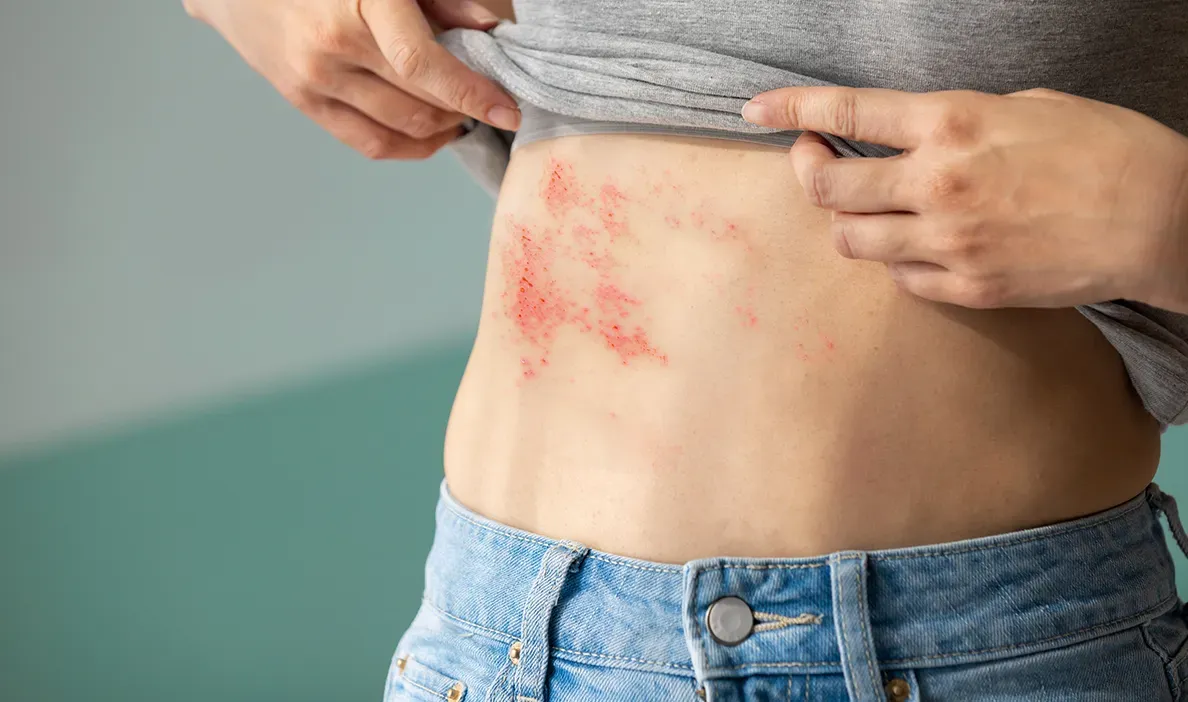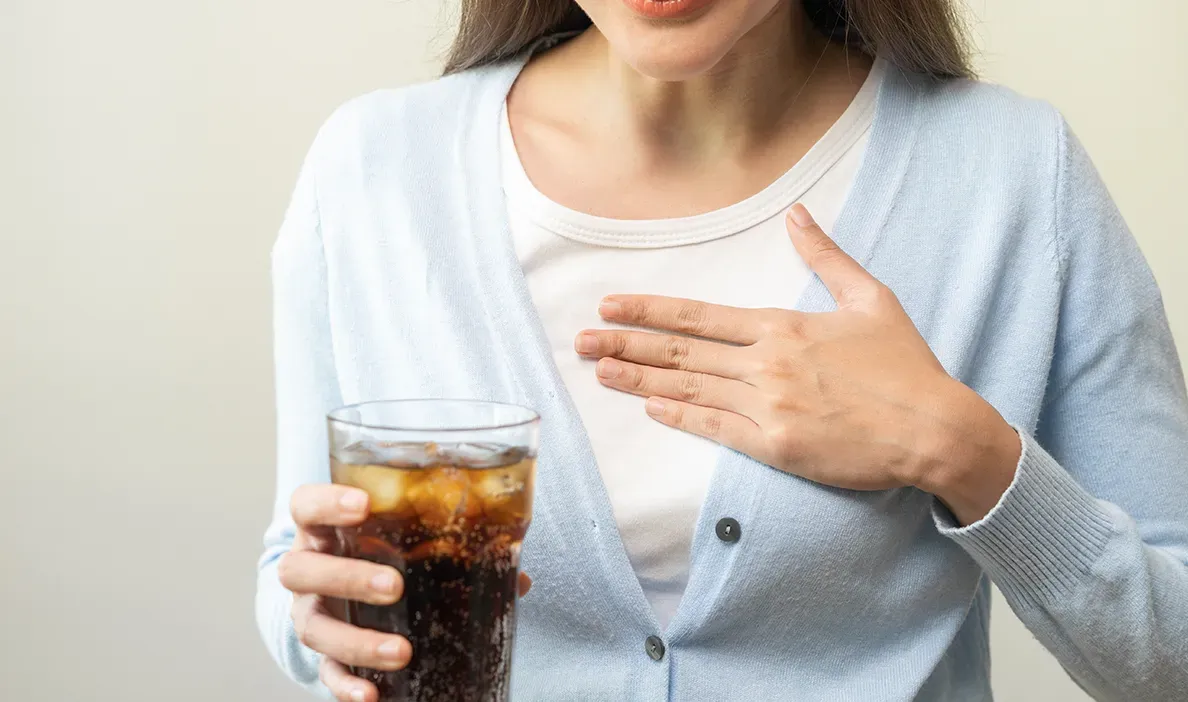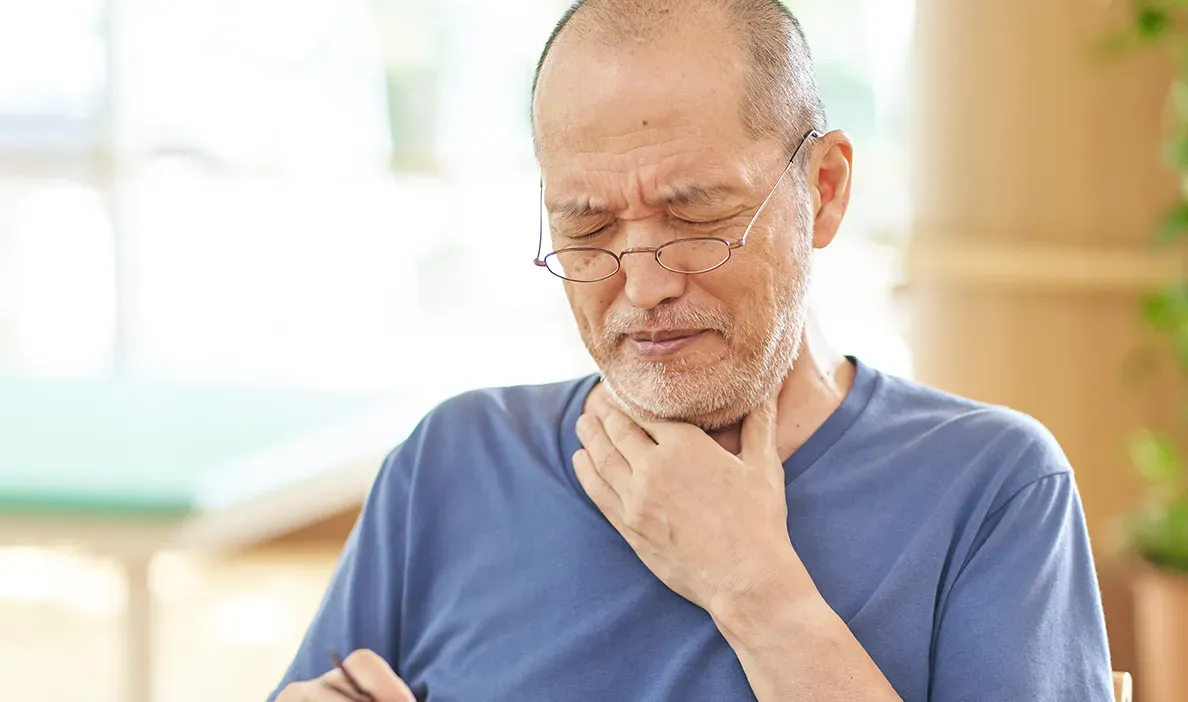Cancer treatment can sometimes lead to uncomfortable skin symptoms such as itching, dryness, rashes and redness.1 Your skin’s condition and appearance may change depending on the medication or treatment you're receiving.2
We’ve pulled together some tips below to help you manage your skin symptoms. Remember, it’s important to let your doctor or nurse know about any changes you notice.
Managing dry skin
If your skin is dry, it may feel tight, rough, itchy or flaky. As hot water can make dry skin worse, it could be a good idea to limit baths and showers to under 10 minutes and use lukewarm (not hot) water.3 Make sure your skin is kept well moisturised by using gentle, fragrance-free soaps, bath products and lotions.2
We’ve put together some tips to help you manage your skin symptoms.
Top tip:
After washing, gently pat your skin to remove excess water, then apply gentle, fragrance-free moisturiser while your skin is still damp to lock in hydration.4
Relieving itchy skin
Itchy skin is often linked with dryness, and resisting the urge to scratch can be challenging. Itchiness can be soothed by adding baking soda or oats to a lukewarm bath.2 Avoid using perfumed bath oils – instead, bathe using gentle bath products that are suitable for sensitive skin.3 You can also try keeping your living space cool and humid to stop your skin from becoming too warm or dry.2
Top tip:
Keep your skin well moisturised with an emollient or moisturiser that contains oatmeal, menthol or 10% urea.4
Caring for a rash
Rashes often appear as irritated, bumpy or itchy skin. Soap and perfumes can make rashes worse, so try to wash with soap-free cleansers.2 Remember to keep your baths and showers short, use lukewarm water and moisturise your skin immediately afterwards.4
You may also find that wearing loose-fitting clothing can stop your clothes rubbing on your sensitive skin, and they will also allow your skin to breathe.4
Top tip:
Choose clothes made from soft, breathable fabrics like cotton and linen. These are gentle on the skin and can cause less irritation than some other fabrics.5
Managing redness
Redness can appear in blotches or patches without a rash. It can be managed by ensuring that your skin is always well moisturised, avoiding products that could cause irritation, and taking care to avoid areas of broken skin.2 If you notice that certain products make your redness worse, take a break from them.
Top tip:
Test new skincare products on a small area of skin for 7–10 days to see whether they agree with you.6
Skin symptoms can sometimes affect your confidence and social interactions –this is completely normal.8 Don’t be afraid to seek support from friends, family or patient support groups. Journaling can also help you to manage stress caused by your symptoms.
Diet, lifestyle and skin symptoms
You may notice that your diet can have an impact on your skin. Some foods and drinks like red meat, dairy products (containing cow’s milk), alcohol and caffeine can make some skin symptoms worse, so try to limit them.7
Top tip:
Drink plenty of water and other fluids to stay hydrated. Keep a water bottle handy to maintain skin moisture throughout the day.2
We hope these tips will help you with some skin symptoms. If you are experiencing any new symptoms, or symptoms that are getting worse, it’s important you speak with your healthcare team. They will be able to provide more information and support.
References
- National Cancer Institute. Skin and nail changes during cancer treatment. Available at: www.cancer.gov/about-cancer/treatment/side-effects/skin-nail-changes [Accessed June 2025].
- City of Hope. Skin care and cancer treatment. Available at: www.cancercenter.com/treatment-options/skin-care [Accessed June 2025].
- Mayo Clinic. Dry skin. Available at: www.mayoclinic.org/diseases-conditions/dry-skin/symptoms-causes/syc-20353885 [Accessed June 2025].
- Macmillan. Skin and nail changes from cancer treatment. Available at: www.macmillan.org.uk/cancer-information-and-support/impacts-of-cancer/changes-to-your-appearance-and-body-image/skin-and-nail-changes-from-cancer-treatment [Accessed June 2025].
- BreastCancer.Org. Rash. Available at: https://www.breastcancer.org/treatment-side-effects/rash [Accessed June 2025].
- American Academy of Dermatology. How to test skin care products. Available at: https://www.aad.org/public/everyday-care/skin-care-secrets/prevent-skin-problems/test-skin-care-products [Accessed June 2025].
- Medical News Today. Foods to avoid with psoriasis. Available at: www.medicalnewstoday.com/articles/foods-to-avoid-with-psoriasis [Accessed June 2025].
- Mahfouz. M. S., et al. Common skin diseases and their psychosocial impact among Jazan population, Saudi Arabia: A cross-sectional survey during 2023. Medicina (Kaunas). 2023;59(10):1753.






